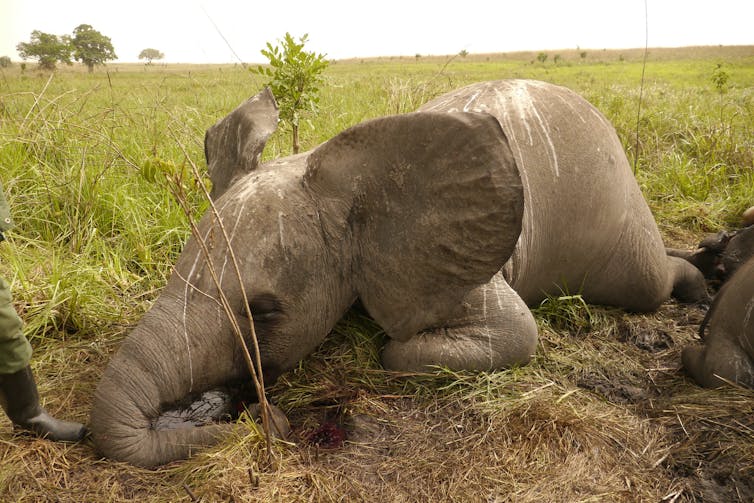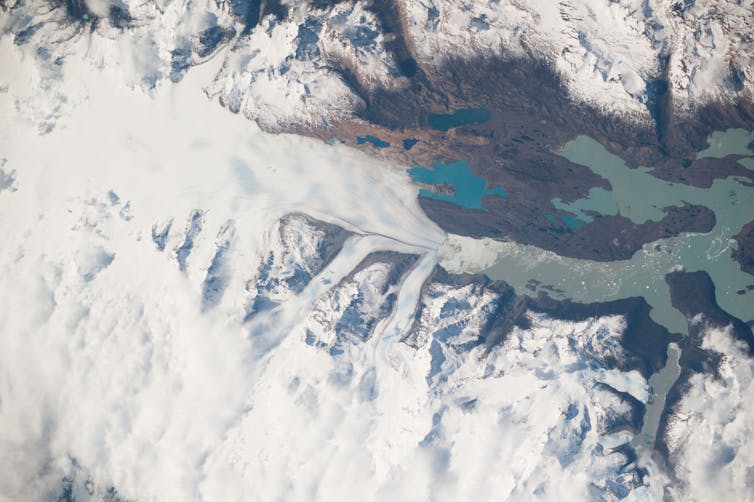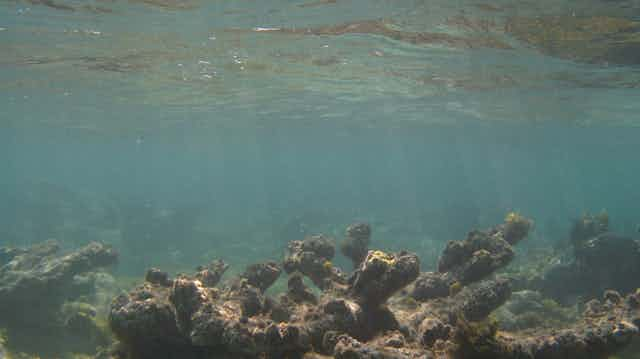
Scientists are coming to the conclusion that we are on the brink of a mass extinction — the sixth known in the history of the Earth, and the latest since an asteroid killed off the dinosaurs 65 million years ago. This time we are the culprits.
Wherever humans go, extinction seems to follow, but worse is yet to come, with climate change and ocean acidification compounding pressures humans already place on ecosystems.
The Sixth Extinction is the topic of the latest book by journalist Elizabeth Kolbert. An environmental commentator for The New Yorker, Kolbert previously wrote about climate change in Field Notes from a Catastrophe.
Here environmental scientist Bill Laurance talks with Kolbert about extinction, climate change, and explaining bad news.
Bill Laurance: What do you see as the biggest changes that are causing species to go extinct now, and how do you think that might change in the future?
Elizabeth Kolbert: A lot of extinctions have been caused by alien species. This is especially true on islands, but also in Australia which has lost many native species to native invaders. That’s a big driver — we’re moving species around the world constantly, and that can sometimes have very devastating impacts.
In the case of large mammals we’re seeing hunting and poaching. Many species are highly endangered right now. Elephants are really in crisis right now owing to poaching. Rhinos are really in crisis right now thanks to poaching, and habitat fragmentation.
There’s a lot of very bad synergies going on right now. If you look forward to really big drivers which I talk about in my book, which are overlain on these others, there’s climate change and ocean acidification. By pouring billions of tonnes of carbon into the atmosphere we’re driving climate change at a speed that probably hasn’t been seen for many millions of years.
And we are acidifying the oceans in a way that almost certainly that has not been seen for many many millions of years.

Bill Laurance: When communicating environmental issues, do we need to polarise debates and identify “bad guys”, or search for broad-based consensus, or something else altogether?
Elizabeth Kolbert: My approach has been to — as journalists do — to tell stories. I’ve tried to avoid particular story lines with villains and heroes, because unfortunately we are all participants to one degree or another to what is going on on our planet.
That responsibility varies depending on whether you live in developed country like Australia or the US, or whether you live in less-developed countries which use fewer resources. But we all to one degree or another have responsibility.
I’ve tried to tell stories that don’t admit as much contradiction. They are just things that are happening on the ground; you can go and watch them happen. Well, you might not be able to watch them happen, but through a journalist going there you can. So that’s the approach I take.
There are many different approaches that other people have taken, and I think that they’re all worth a try. How exactly you get to and reach people is something nobody seems to have figured out.
Bill Laurance: Who do you admire most as environmental communicators and leaders?
Elizabeth Kolbert: There are a lot of people out there who have told stories of different kinds. They’re all American — because I’m American! I think Bill McKibben is a very effective communicator. Thomas Lovejoy has been done a great job communicating. There’s been a bunch of recent books in this space — Naomi Oreskes has done a great job.
People have tried all sorts of different texts. I don’t know anyone who says “I’ve truly succeeded and broken through” — but there are a lot of people trying.
Bill Laurance: Communicating uncertainty in science is vital, yet it’s also a fine line to walk. How do you convey uncertainty and yet not leave your audience feeling as though we know too little to act? Or allow the Bjorn Lomborg’s and other naysayers of the world to exploit such uncertainty in order to advocate for complacency or inaction?
Elizabeth Kolbert: A lot of story-telling involves things that have already happened. When I wrote a book about climate change, I went out with people who have logged data already, and seen changes already happening that we could be quite confident could be attributed at least in part to man-made climate change.
If we were doing a statistical analysis of this we could say exactly what proportion of the attribution we could give to climate change and to natural variability. If I were doing a scientific paper I would have to grapple with that, but because I’m telling a story, the issue of uncertainty is less an issue when you’re talking about things that are happening as we speak or have happened. For the book I went to Greenland and talked to native Greenlanders about what changes they were seeing happening.
Ditto with writing about extinction. In many cases we’re talking about species that are already extinct, so there’s no uncertainty there.
Unfortunately what we know is alarming enough, and what we don’t know is maybe even more alarming. What we can actually see happening before our eyes — that’s what I tend to write about.

Bill Laurance: Where does the issue of human population growth sit among your constellation of environmental concerns?
Elizabeth Kolbert: Every way you look at how humans impact on the planet there are a couple of figures: one is how many individuals there other, the second is how many resources are they consuming.
Obviously, both of those matter. You can have long arguments about which matters more. But in some sense that matters where you are on the planet; some of us are very, very big consumers and some of us are not. Those of us who are big consumers tend to be having fewer children, so in some ways they’re counteracting trends.
But population is a very big part of what’s happening. If the population were 500 million on the planet, things would be very different, but there are 7.2 billion of us, and we are nearing 8, and heading for 9, and after that is something of an open question.
Bill Laurance: Humans have a long and rather spectacular history of killing off other species. But many of our behaviours and instincts are deeply embedded and, in fact, probably adaptive in an evolutionary sense. Can we overcome our past to achieve a more equitable future, or are we essentially victims of our own biological legacy?
Elizabeth Kolbert: Unfortunately when you look at the fossil or subfossil record — and Australia is the primary example — as soon as people arrive you see a wave of extinctions that were almost certainly caused by people. There weren’t very many of them, and technologically they weren’t consuming a lot. Nevertheless the disparity between people who can change very quickly, who can make a new tool, puts us out of step with evolution. Tim Flannery has written very eloquently on this.
That has been true for a very long time - for 50,000 years. Now that there are many more of us, and we’re much more technologically sophisticated, and we’re consuming a lot more resources, it’s a very hard to say that we’re going to stop doing that.
But it’s what we all have to be thinking about — how can we try to minimise our impacts. There is a very profound issue here that transcends modernity, about how humans relate to the rest of the world.
Kolbert is appearing at the 2014 Melbourne Writers’ Festival on Friday August 29 for Talking Points: The Sixth Extinction, and then at the Sydney Opera House Festival of Dangerous Ideas for We Are the Asteroid on Saturday August 30.
Read more coverage of the Melbourne Writers’ Festival.

